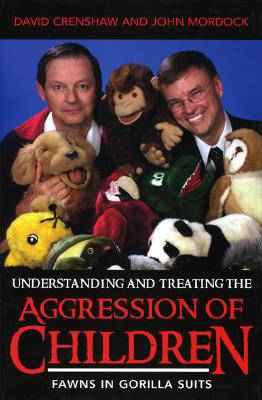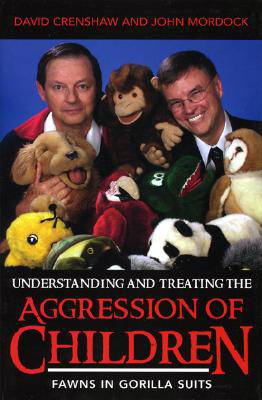
Door een staking bij bpost kan je online bestelling op dit moment iets langer onderweg zijn dan voorzien. Dringend iets nodig? Onze winkels ontvangen jou met open armen!
- Afhalen na 1 uur in een winkel met voorraad
- Gratis thuislevering in België vanaf € 30
- Ruim aanbod met 7 miljoen producten
Door een staking bij bpost kan je online bestelling op dit moment iets langer onderweg zijn dan voorzien. Dringend iets nodig? Onze winkels ontvangen jou met open armen!
- Afhalen na 1 uur in een winkel met voorraad
- Gratis thuislevering in België vanaf € 30
- Ruim aanbod met 7 miljoen producten
Zoeken
Understanding and Treating the Aggression of Children
Fawns in Gorilla Suits
David A Crenshaw, John B Mordock
Hardcover | Engels
€ 125,95
+ 251 punten
Uitvoering
Omschrijving
Understanding and Treating the Aggression of Children: Fawns in Gorilla Suits provides a thorough review of the theoretical and research basis of the techniques and interventions in the treatment of aggressive and sometimes violent children. This is not a dry and sterile academic review but rather one that comes from work directly in the therapy room with thousands of hurting and in many cases traumatized children. One cannot read this book without being deeply moved and touched by the pain of these children and yet also be buoyed by their courage and willingness to persevere against formidable barriers. The metaphor of the fawn in a gorilla suit is introduced, followed by chapters covering developmental failures and invisible wounds, profound and unacknowledged losses, the implication of new findings from neuroscience, psychodynamics of aggressive children, risk factors when treating the traumatized child, special considerations when treating children in foster care, strengthening relationships with parents and helping them be more effective, enhancing relationships with direct care and instructional staff, developing mature defenses, and coping skills, creating a therapeutic milieu for traumatized children, and fostering hope and resilience.
Specificaties
Betrokkenen
- Auteur(s):
- Uitgeverij:
Inhoud
- Aantal bladzijden:
- 312
- Taal:
- Engels
Eigenschappen
- Productcode (EAN):
- 9780765700346
- Verschijningsdatum:
- 14/04/2005
- Uitvoering:
- Hardcover
- Formaat:
- Genaaid
- Afmetingen:
- 162 mm x 229 mm
- Gewicht:
- 598 g

Alleen bij Standaard Boekhandel
+ 251 punten op je klantenkaart van Standaard Boekhandel
Beoordelingen
We publiceren alleen reviews die voldoen aan de voorwaarden voor reviews. Bekijk onze voorwaarden voor reviews.











